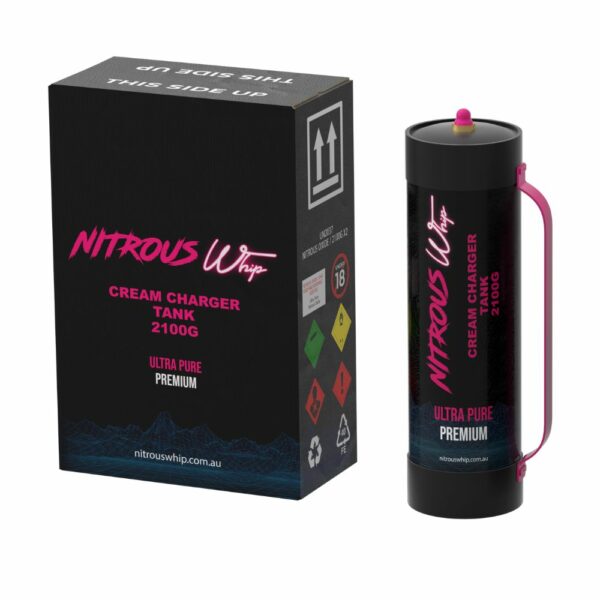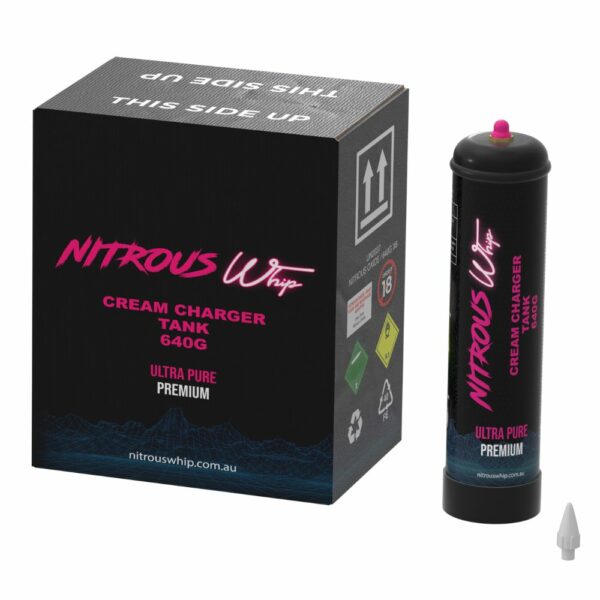N2O vs CO2: Comparing Gases Utilized in Culinary Applications
Introduction
In the culinary world, using gases in cooking has become an essential part of premium cooking and modern-day gastronomy. Two of the most typically used gases for different culinary applications are Laughing gas (N2O) and Carbon Dioxide (CO2). Each gas serves its special function, catering to various elements of cooking, from light whipping cream to carbonation. This short article explores the complex details of these 2 gases, exploring their properties, uses, benefits, drawbacks, and a lot more. By the end, you will have a detailed understanding that will assist you make notified choices in your cooking endeavors.
N2O vs CO2: Comparing Gases Utilized in Culinary Applications
Understanding Nitrous Oxide (N2O)
Nitrous oxide, frequently referred to as chuckling gas due to its euphoric results when inhaled, is more than simply a dental anesthetic. In culinary applications, it's primarily utilized in whipped cream chargers. These chargers are little containers filled with N2O that permit chefs and home cooks alike to produce fluffy whipped cream rapidly and efficiently.
Why Usage N2O?
Understanding Carbon Dioxide (CO2)
On the other hand, carbon dioxide is mostly understood for its function in carbonation-- think fizzy drinks! This colorless gas includes effervescence to drinks and can also be utilized in culinary strategies such as spherification.
Why Use CO2?
Properties of N2O and CO2
Chemical Composition
- Nitrous Oxide (N2O) includes 2 nitrogen atoms bonded to one oxygen atom.
- Carbon Dioxide (CO2) includes one carbon atom bonded to 2 oxygen atoms.
Physical Properties
|Home|Laughing Gas (N2O)|Co2 (CO2)|| -------------------|----------------------|-----------------------|| State at Room Temperature|Gas|Gas|| Solubility|Moderate|High|| Taste|Somewhat sweet|A little acidic|
Culinary Applications of N2O
Whipped Cream Chargers
Whipped cream chargers are small steel cylinders filled with laughing gas gas. When dispensed through a whipped cream dispenser, they create light and airy whipped cream that's ideal for topping desserts or enhancing coffee drinks.
Foams and Espumas
Creative chefs utilize N2O for making flavored foams or espumas that include texture and taste complexity to dishes.
Culinary Applications of CO2
Carbonated Beverages
From sodas to champagnes, CO2 is essential for providing fizz and improving mouthfeel.
Spherification Techniques
Using a method called spherification, chefs can create caviar-like spheres filled with tasty liquids using carbon dioxide.

Advantages of Utilizing N2O
- Whips cream quickly.
- Creates steady textures.
- Can instill tastes into creams easily.
Advantages of Using CO2
- Enhances flavors through carbonation.
- Versatile throughout various culinary applications.
- Available in larger amounts for business use.
Disadvantages of N2O
Limited shelf life when whipped.
Since whipped cream made with N2O has a much shorter life expectancy compared to traditional whipping techniques, it must be taken in right after preparation.
Health Concerns
Excessive inhalation can result in health risks; however, this generally applies outside culinary contexts.
Disadvantages of CO2
Over-carbonation Risk
Too much CO ₂ can result in extreme fizziness that might overwhelm some meals or beverages.
Flavor Alteration
In some cases, the level of acidity from co2 may not be suitable for all foods or drinks.

How Are They Used? A Closer Take A Look At Cooking Techniques
Using N2O Cream Chargers Effectively
Attach a charger bulb safely to your whipped cream dispenser.
Ensure it's correctly sealed before releasing the gas to prevent leaks!
Shake well after charging for optimum results.
Dispense as needed-- voila! You've got fresh whipped cream prepared in seconds!
Using CO ₂ for Carbonated Drinks
Use a soda maker or carbonation system developed particularly for home use.
Fill your bottle with cold water approximately the fill line-- cold water soaks up gas better!
Follow maker instructions on how long and the number of times you need to carbonate your drink.
Enjoy your homemade carbonated drink instantly!
FAQs about N2O vs CO ₂
1. What are whip cream chargers made of?
Whipped cream chargers are normally made from stainless steel or aluminum filled with laughing gas gas.
4. Can I use N ₂ O battery chargers for anything besides whipped cream?
Yes! They can likewise be used for developing flavored foams and infusing ingredients rapidly.
5. Exists a distinction in between nitrous oxide tanks and chargers?
Yes! Tanks hold bigger quantities of gas compared to small chargers utilized in dispensers.
6. Can I use CO ₂ cartridges instead of N ₂ O cartridges?
No! They serve extremely different purposes; utilizing one rather of the other may harm equipment or produce undesirable results.
Conclusion
In summary, both Nitrous Oxide (N ₂ O) and Co2 (CO ₂) play substantial functions in modern culinary practices-- from producing luscious whipped creams with nitrous oxide cream chargers to crafting shimmering drinks infused with carbon dioxide bubbles. Comprehending their homes permits chefs and home cooks alike to choose carefully based on their intended applications-- whether you want that ideal dollop on top of your dessert or seek out revitalizing nang tanks guide effervescence in your drink!
As we've explored throughout this article on "N ₂ O vs CO ₂: Comparing Gases Used in Culinary Applications," it's clear that each has its own merits depending upon the wanted outcome-- so why not experiment today? Pleased cooking!
